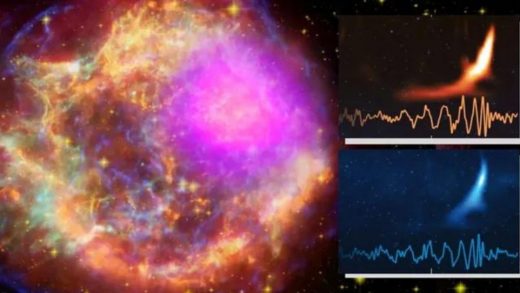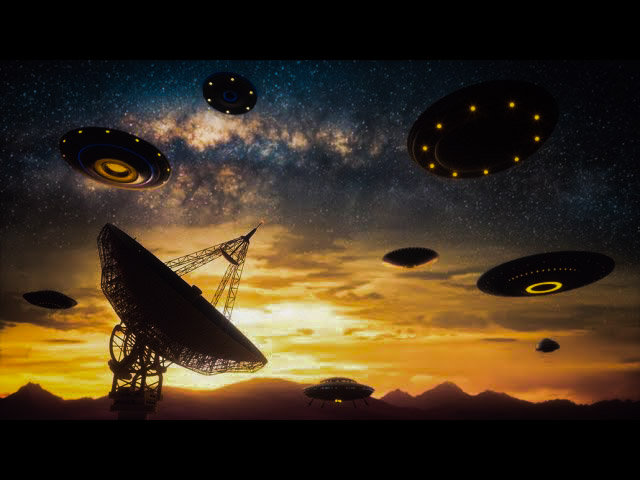Massive, unknown radio structure detected around the universe’s brightest quasar: What’s the source of the large radio fog around the galaxy?

Astronomers have recently identified two large as well as mysterious objects blasting out of the brightest black hole in the known universe.
The supermassive black hole 3C 273, which is a quasar, was discovered in a 1959 survey of cosmic radio-wave sources. The light emitted by these behemoths is bright enough to be mistaken for starlight. As we know that black holes themselves do not emit light, however, the largest ones are surrounded by gargantuan swirls of gas called accretion disks. It happens as gas falls into the black hole at near-light speed, friction heats the disk and causes it to blaze with radiation — typically detected as radio waves.
What are quasars and how do they emit light?
Quasars are the most powerful radio source in the universe. When viewed from Earth, quasars appear as energetic beacons of light whose light is weakly distorted and reflected from the gas in which they reside.
Quasars were discovered in 1963 by two independent teams of astronomers who spotted these supermassive objects at the very centers of distant galaxies when radio telescopes were not available for use. The word “quasar” is short for “quasi-stellar radio source”, or a type of object that partially resembles a star as it emits light, but is also a very energetic but otherwise ordinary (i.e., not like a star) object with no known stellar origin.
Quasars are extremely luminous, with luminosities many times greater than those of the most luminous galaxies. Because they emit most of their energy in the form of radio waves, they are commonly referred to as “radio galaxies” or “quasi-stellar” galaxies. Within certain regions of space, quasars can outshine entire galaxies as seen from Earth.
The first quasi-stellar radio source was discovered in October 1963 by a team led by Jocelyn Bell Burnell; she and her colleagues independently reported the discovery to three separate journals. This discovery eventually led to the identification of a continuous radio source in the constellation Virgo and to the hypothesis that these sources were distant galaxies with unusually high redshifts. The first quasars were identified as being members of a new class of objects having spectra very similar to stars, some with redshifts greater than 0.5, which is where their name comes from.
View of quasars and ‘Quasar 3C 273’
Due to their high luminosity, quasars are beacons found across the disk of our Milky Way galaxy and in its halo. Since they are so far away, no clear view has been obtained yet of the host galaxies; they could be massive under-luminous blue compact galaxies or ultra-luminous infrared galaxies.
The first quasar ever identified, Quasar 3C 273 is also the brightest, shining more than 4 trillion times as bright as Earth’s sun while sitting at a distance of more than 2.4 billion light-years away. Over the decades, scientists have studied the blazing black hole nucleus extensively. However, because the quasar is so bright, studying the surrounding galaxy that hosts it has been near impossible. That remarkable brightness has left scientists largely in the dilemma about how quasars impact their host galaxies.
New discoveries
A new study, by a team of astronomers, published in The Astrophysical Journal on April 28 could finally change that.
The astronomers used the Atacama Large Millimeter/submillimeter Array (ALMA) radio telescope in Chile to calibrate it so that it could distinguish the radiant glow of quasar 3C 273 from the light generated by its host galaxy. They were left with only the quasar’s galaxy’s radio waves, which revealed two gigantic and enigmatic radio structures that had never been seen before.
One structure looks to be a massive smear of radio light that wraps around the entire galaxy and spans thousands of light-years to the south-west. This radio fog merges with the second structure, a massive jet of energy known as an astrophysical jet that runs for tens of thousands of miles.
Astrophysical jets are a mystery to scientists. They don’t know how or why they arise. They do know that jets are prevalent near quasars and other supermassive black holes, and that they are most likely caused by interactions between the black hole and its dusty accretion disc. Ionized (electrically charged) matter is used to make jets, which travel at near-light speed.
The radiation emitted by these jets can look brighter or darker depending on the radio frequency at which it is observed; nevertheless, the huge radio structure orbiting galaxy 3C 273 had a consistent brightness regardless of frequency. This shows that the two radio structures are formed by independent, unconnected events, according to the researchers.
Scientists’ conclusion about source of the large radio fog around the galaxy
After testing several theories, the team concluded that the large radio fog around the galaxy comes from star-forming hydrogen gas that’s being ionized directly by the quasar itself. This is the first time that ionized gas has been seen stretching tens of thousands of light-years around a supermassive black hole, according to the researchers.
This finding sheds light on a long-standing astronomical puzzle: can a quasar ionize enough gas in its host galaxy to prevent new stars from forming? To get an answer, the researchers compared the estimated gas mass of the galaxy to that of other galaxies of similar type and size. They discovered that, while the quasar had ionized a massive amount of gas, rendering it unusable for star formation, star formation in the galaxy as a whole had not been repressed. This shows that galaxies with radiation-belching quasars at their centers can nonetheless be thriving and growing.
Read: Huge, Spectacular Rings around a Black Hole Captured: How did such Rings Form?
Lead study author Shinya Komugi, an associate professor at Kogakuin University in Tokyo said in a statement that this discovery provides a new avenue to studying problems previously tackled using observations by optical light. “By applying the same technique to other quasars, we expect to understand how a galaxy evolves through its interaction with the central nucleus”, Komugi added.
So, this discovery is a great step forward in solving the long-standing riddle of quasar host galaxies. We do not yet know how quasars impact their host galaxies. However, with this new discovery, we now know that they’re not as deadly to galaxy life as they were once thought to be.


